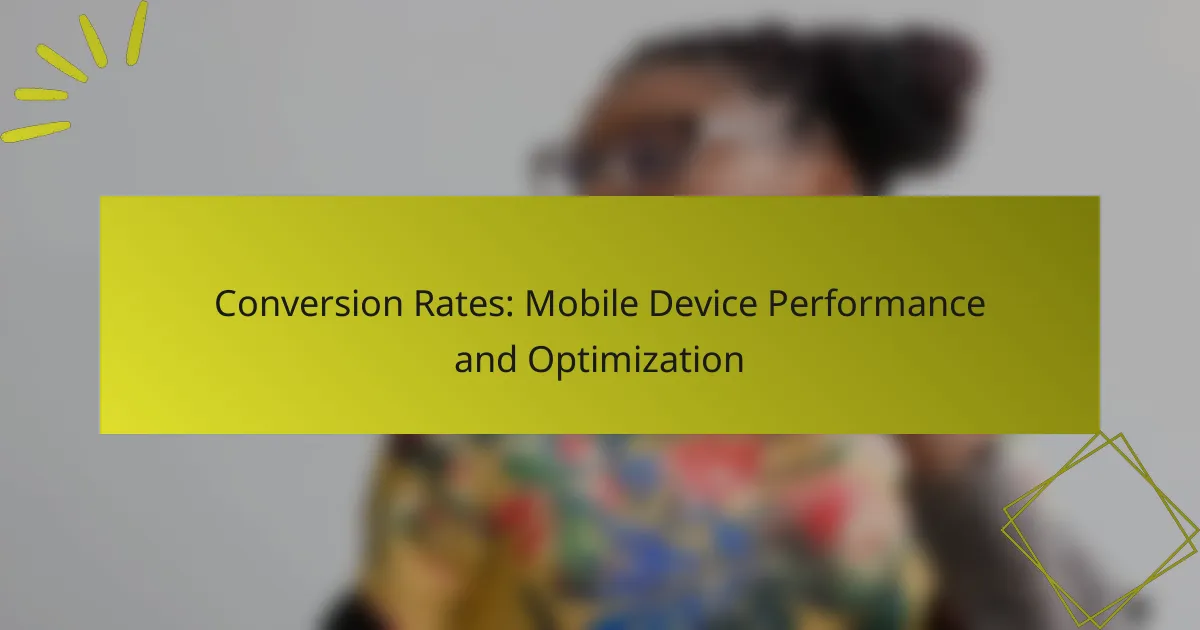A/B testing is a powerful tool for enhancing display ad performance, enabling marketers to compare various ad versions to identify which resonates best with their audience. By optimizing elements such as design, messaging, and placement based on real user interactions, campaigns can become significantly more effective. Key techniques like multivariate testing and split URL testing further refine this process, allowing for data-driven decisions that improve metrics such as click-through rates and conversion rates.

How can A/B testing improve display ad performance?
A/B testing enhances display ad performance by allowing marketers to compare different versions of ads to determine which one resonates better with the target audience. This method leads to more effective campaigns by optimizing elements such as design, messaging, and placement based on real user interactions.
Increased conversion rates
A/B testing can significantly boost conversion rates by identifying the most effective ad variations. By testing different headlines, images, or calls to action, marketers can determine which elements drive more clicks and conversions. For instance, a simple change in the call to action from “Buy Now” to “Get Yours Today” could lead to a noticeable increase in user engagement.
Enhanced audience targeting
Through A/B testing, advertisers can refine their audience targeting by analyzing how different segments respond to various ads. This enables marketers to tailor their messaging and creative to specific demographics, interests, or behaviors. For example, an ad targeting young adults might feature vibrant colors and trendy language, while one aimed at older consumers could adopt a more classic design and formal tone.
Data-driven decision making
A/B testing fosters data-driven decision making by providing concrete evidence on what works and what doesn’t. Instead of relying on assumptions, marketers can base their strategies on actual performance metrics. This approach minimizes risks and enhances the likelihood of successful campaigns, as decisions are grounded in user behavior data.
Cost-effective optimization
Implementing A/B testing can lead to cost-effective optimization of advertising budgets. By identifying high-performing ads, marketers can allocate resources more efficiently, focusing on strategies that yield the best return on investment. For example, if one ad version consistently outperforms another, it makes sense to invest more in the successful variant while phasing out the less effective one.
Real-time performance insights
A/B testing provides real-time performance insights that allow marketers to make quick adjustments to their campaigns. By monitoring key metrics such as click-through rates and conversion rates, advertisers can pivot their strategies on the fly. This agility can be crucial in a fast-paced digital landscape, where trends and user preferences can shift rapidly.

What are effective A/B testing techniques for display ads?
Effective A/B testing techniques for display ads include multivariate testing, split URL testing, and sequential testing. These methods help marketers optimize ad performance by comparing different variables to identify the most effective combinations.
Multivariate testing
Multivariate testing evaluates multiple variables simultaneously to determine which combination performs best. For instance, you could test different headlines, images, and call-to-action buttons all at once. This technique is beneficial when you want to understand how various elements interact with each other.
When implementing multivariate tests, ensure you have sufficient traffic to achieve statistically significant results. A common pitfall is running tests with too few visitors, which can lead to inconclusive outcomes. Aim for a sample size that allows for reliable data analysis.
Split URL testing
Split URL testing involves directing users to different URLs to test variations of a landing page or ad. This method is particularly useful for assessing entirely different designs or layouts. For example, one group might see a landing page with a video, while another sees a text-heavy version.
To execute split URL tests effectively, ensure that each version is hosted on separate URLs and that traffic is evenly distributed between them. Monitor key performance indicators (KPIs) like conversion rates and bounce rates to determine which version yields better results.
Sequential testing
Sequential testing is a method where variations are tested one after another rather than simultaneously. This approach is useful when you want to refine an ad based on previous results before launching the next iteration. For example, if a particular ad copy performs well, you might tweak the image in the next test.
While sequential testing can provide deep insights, it may take longer to reach conclusions compared to other methods. Be mindful of external factors that could influence results over time, such as seasonal trends or changes in audience behavior. Aim to conduct tests during similar timeframes to maintain consistency.

What metrics should be analyzed in A/B testing?
In A/B testing for display ads, key metrics to analyze include click-through rate (CTR), conversion rate, return on ad spend (ROAS), and engagement metrics. These metrics provide insights into how well different ad variations perform, allowing for informed optimization decisions.
Click-through rate (CTR)
Click-through rate (CTR) measures the percentage of users who click on an ad after seeing it. A higher CTR indicates that the ad is compelling and relevant to the audience. Aim for a CTR of 1-3% for display ads, but this can vary by industry.
To improve CTR, consider testing different headlines, images, and calls to action. Avoid cluttered designs and ensure that the ad aligns with the target audience’s interests.
Conversion rate
The conversion rate reflects the percentage of users who complete a desired action after clicking on an ad, such as making a purchase or signing up for a newsletter. A strong conversion rate indicates effective ad targeting and landing page optimization. Typical conversion rates for display ads range from 1-5%.
To enhance conversion rates, ensure that the landing page is relevant to the ad content and provides a seamless user experience. A/B test different landing page elements, such as layout and messaging, to identify what drives conversions.
Return on ad spend (ROAS)
Return on ad spend (ROAS) measures the revenue generated for every dollar spent on advertising. A ROAS of at least 4:1 is often considered a good benchmark, but this can vary based on business goals and industry standards. Tracking ROAS helps assess the financial effectiveness of ad campaigns.
To optimize ROAS, focus on targeting high-value customer segments and refining ad creatives. Regularly analyze which ads yield the highest returns and allocate budget accordingly.
Engagement metrics
Engagement metrics include various indicators of user interaction with ads, such as time spent on the landing page, bounce rate, and social shares. High engagement often correlates with better ad performance and can provide insights into audience preferences.
To boost engagement, create visually appealing ads that resonate with your audience. Test different formats, such as video or carousel ads, to see which generates more interaction. Monitor these metrics closely to adjust strategies based on user behavior.

What tools are available for A/B testing display ads?
Several tools can effectively facilitate A/B testing for display ads, each offering unique features and capabilities. Choosing the right tool depends on your specific needs, budget, and level of expertise.
Google Optimize
Google Optimize is a free tool that integrates seamlessly with Google Analytics, allowing users to run A/B tests on their display ads. It provides a user-friendly interface to create experiments, analyze results, and make data-driven decisions.
Key features include multivariate testing, personalization options, and easy setup for users familiar with Google products. However, it may have limitations in advanced targeting and customization compared to paid tools.
Optimizely
Optimizely is a powerful A/B testing platform that offers extensive features for optimizing display ads. It allows users to create experiments without needing coding skills, making it accessible for marketers at all levels.
This tool supports multivariate testing and provides robust analytics to track user behavior and conversion rates. While it is more expensive than some alternatives, its advanced capabilities can justify the investment for larger businesses.
VWO
VWO (Visual Website Optimizer) is another popular choice for A/B testing display ads, known for its visual editor that simplifies the testing process. Users can easily create variations of their ads and track performance metrics through an intuitive dashboard.
VWO also offers features like heatmaps and session recordings, which help understand user interactions. While it provides comprehensive testing options, smaller businesses may find the pricing a bit steep compared to other tools.


